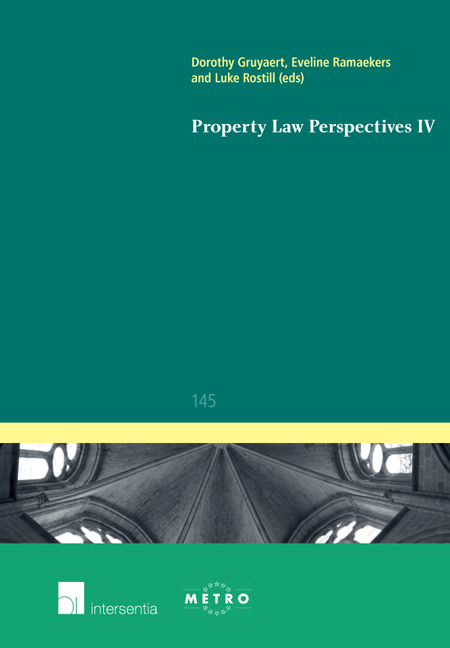Book contents
- Frontmatter
- Preface
- Contents
- Retention of Title v. Immovable Incorporation
- (Alternatives to) the Sale of Churches
- The First in Time Rule in Historical Context
- Paul Krugerbrug Revisited: State Action with an Excessive Impact on Property Rights from a Comparative Perspective
- The Reappearance of Ownership as a Means of Security in Mexican and French Law, the Battles Between Legal Technique and Legal Policy in Insolvency Law
- On the Unity or Disunity of Acquisitive and Extinctive Prescription. Or How Daring Reinterpretations are not Always Right
- Ius Commune Europaeum
Paul Krugerbrug Revisited: State Action with an Excessive Impact on Property Rights from a Comparative Perspective
Published online by Cambridge University Press: 21 September 2018
- Frontmatter
- Preface
- Contents
- Retention of Title v. Immovable Incorporation
- (Alternatives to) the Sale of Churches
- The First in Time Rule in Historical Context
- Paul Krugerbrug Revisited: State Action with an Excessive Impact on Property Rights from a Comparative Perspective
- The Reappearance of Ownership as a Means of Security in Mexican and French Law, the Battles Between Legal Technique and Legal Policy in Insolvency Law
- On the Unity or Disunity of Acquisitive and Extinctive Prescription. Or How Daring Reinterpretations are not Always Right
- Ius Commune Europaeum
Summary
Introduction
When the State takes away property rights on land from a company in order to use the land in the public interest, the business activities of the company, insofar as they depend upon the property rights, have to be halted. The company will have to resume its business activities somewhere else. However, it will receive just and equitable compensation. There are, however, other forms of state action affecting the exercise of property rights that do not lead to expropriation in the sense of a transfer of property rights, but equally threaten the economic viability of a company.
One example would be the plan to build a new non-moveable bridge in the municipality of Utrecht, The Netherlands. The private limited company Liesbosch B.V. (Besloten vennootschap met beperkte aansprakelijkheid; hereinafter referred to as: Liesbosch) was operating a shipyard in the municipality of Nieuwegein in the Dutch province of Utrecht. At the shipyard, Liesbosch inter alia produced and repaired ships by order of companies that belonged to its corporate group or other companies. To deliver the ships Liesbosch made use of the Merwedekanaal (Merwede Canal) that connected the shipyard through two locks to the Amsterdam-Rijnkanaal (Amsterdam-Rhine Canal), which links the harbour of Amsterdam to the industrial Ruhr region in Germany. On their way through the canal, ships with a width of 12 to 14 metres had to pass the drawbridge Paul Krugerbrug (Paul Kruger Bridge), located in the west of Utrecht. In the 1970s, the municipality of Utrecht was planning to build a new tram line from Utrecht to Nieuwegein. The new tram was envisaged to run over the Paul Kruger Bridge. To improve traffic security and reduce costs the municipality of Utrecht decided to replace the drawbridge with a non-moveable bridge. On 7 March 1980 Rijkswaterstaat, the Dutch Highways Agency, granted the municipality permission to remove the old drawbridge and to build the new non-moveable bridge. The new bridge would only have an altitude of 3.63 metres. The bigger type of ships that Liesbosch built or repaired, however, could have a height of up to 6.85 metres.
- Type
- Chapter
- Information
- Property Law Perspectives IV , pp. 55 - 80Publisher: IntersentiaPrint publication year: 2016



